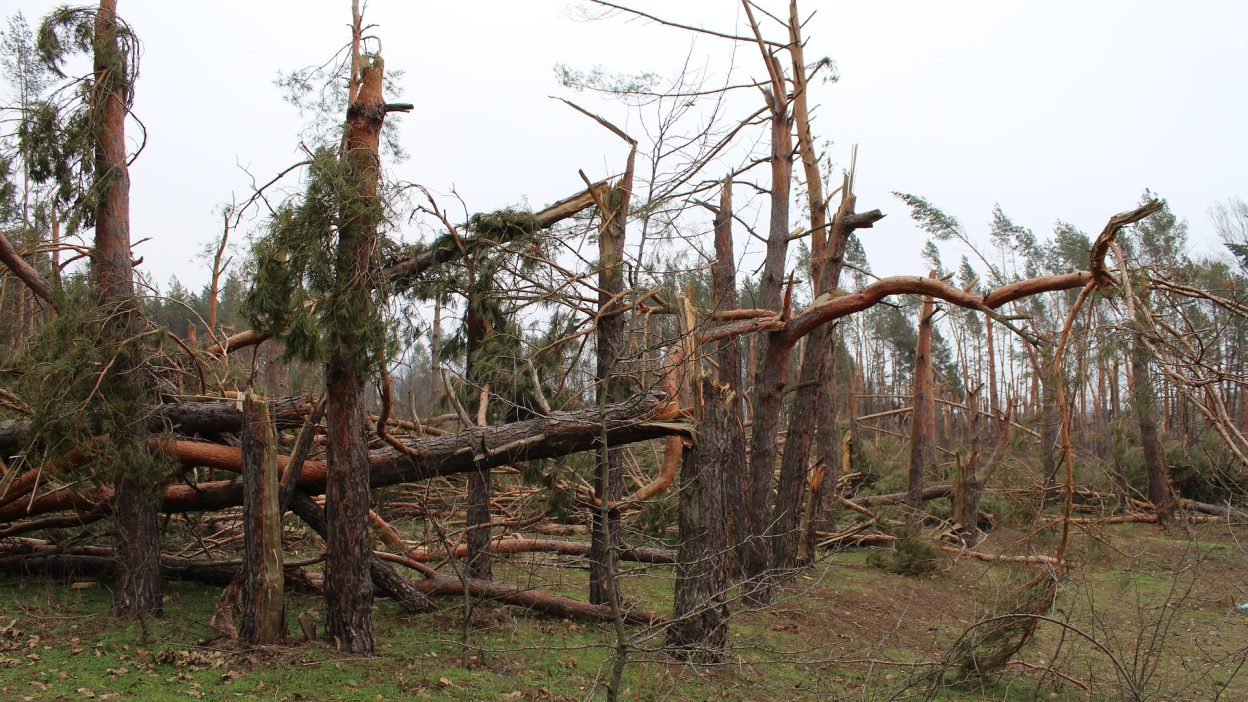The Forgotten Storm That Shook A Nation
1. Introduction: A Disaster That Faded from History
The 1969 East Pakistan Tornado remains one of the most devastating and neglected natural disasters in history. Despite its colossal impact, this catastrophic event has been overshadowed by other natural calamities and the turbulent political climate of the time. In what is now Bangladesh, the tornado struck with an unprecedented level of fury, leaving thousands dead, tens of thousands injured, and entire villages wiped off the map. Yet, unlike the more widely recognised Bhola Cyclone of 1970, this disaster has largely faded from public memory.
This article delves deep into the destruction, human suffering, and long-term consequences of the tornado while analysing the government’s response and the lessons left behind.
2. The Calm Before the Storm: How It All Began
The prelude to disaster was eerily calm. In early 1969, East Pakistan (now Bangladesh) was experiencing a period of seasonal weather changes, with rising temperatures and a humid atmosphere creating the ideal conditions for tornado formation. Local communities, unaware of the impending catastrophe, continued their daily routines, unaware that within hours, their lives would change forever.
During this time, political unrest was escalating in the region. East Pakistanis were growing increasingly dissatisfied with West Pakistani rule, and tensions between the two sides were mounting. The political turmoil, however, would soon be overshadowed by an even greater force of destruction—nature itself.
Meteorological data from the time suggests that a massive supercell storm developed in the sky over East Pakistan, leading to the formation of a violent tornado. But with limited weather forecasting technology, there were no early warnings or evacuation measures in place. By the time people noticed the storm, it was far too late to escape.
3. The Wrath Unleashed: Deaths, Injuries, and Shocking Statistics
The 1969 East Pakistan Tornado stands as one of the deadliest and most destructive tornadoes ever recorded. The following statistics reveal the full scale of the devastation:
- Casualties: Over 1,000 people were reported dead, though unofficial estimates suggest the actual death toll could be significantly higher.
- Injuries: More than 12,000 people suffered severe injuries, ranging from broken bones to life-threatening wounds caused by flying debris.
- Property Destruction: Entire villages were obliterated, with thousands of homes flattened within minutes.
- Wind Speed: The tornado’s wind speeds were estimated to have exceeded 200 mph (322 km/h), making it one of the most violent storms to hit the region.
- Displacement: At least 80,000 people were left homeless overnight, struggling to find shelter and basic necessities.
- Economic Toll: While no precise figures exist, the damage was estimated to be in the millions of dollars, a staggering sum for the region at the time.
4. The Worst-Hit Areas: Ground Zero of the Tornado’s Fury
The tornado’s epicentre lay in the heart of East Pakistan, tearing through multiple districts and causing irreparable damage to rural communities.
Villages that had existed for generations were reduced to rubble within minutes. Homes made of bamboo and mud stood no chance against the powerful winds. Lush agricultural fields, which were the primary source of income for many, were destroyed, leaving thousands of farmers without livelihoods.
Survivors described the horrific scenes—people being lifted into the air, houses vanishing in seconds, and the sky turning pitch black. Many who survived were left traumatised, having lost entire families in the blink of an eye.
5. A Government’s Indifference: Slow and Inadequate Response
The response from the Pakistani government was shockingly inadequate. At a time when political unrest was at its peak, officials in West Pakistan were more focused on maintaining control over East Pakistan than providing emergency relief.
In the days following the tornado, survivors were left without food, water, or medical care. The government’s failure to act swiftly led to a second wave of deaths, as many succumbed to untreated injuries, infections, and starvation.
International aid organisations attempted to intervene, but bureaucratic delays and lack of coordination significantly hindered relief efforts. The disaster exposed the deep neglect of East Pakistan by the ruling authorities in West Pakistan, further fuelling the independence movement that would eventually lead to the birth of Bangladesh in 1971.
6. The Forgotten Victims: The Human Cost of the Tornado
The impact of the tornado was not just physical—it was deeply emotional and psychological. Families were torn apart, with children orphaned and entire bloodlines wiped out. The survivors were left with nothing but scars, trauma, and memories of loved ones lost.
Many of the injured never fully recovered due to a lack of medical facilities, and those who did faced lifelong disabilities. The psychological impact was profound—anxiety, depression, and PTSD became lifelong struggles for many.
7. Long-Term Consequences: How This Disaster Shaped the Region
- Environmental Impact: The storm destroyed massive amounts of farmland, leading to food shortages and economic strain.
- Political Impact: The government’s failure to respond fuelled anger and resentment towards West Pakistan, playing a key role in the Bangladesh Liberation War (1971).
- Urban Migration: Thousands of displaced survivors moved to Dhaka and other cities, changing the region’s demographics and economy.
- Lack of Historical Recognition: Unlike other major disasters, this tornado has been largely forgotten, with little documentation available.
8. Lessons from the Past: What Can Be Learned from This Tragedy?
The 1969 East Pakistan Tornado serves as a crucial reminder of the importance of disaster preparedness, early warning systems, and rapid response efforts. Had there been an effective weather monitoring system, the government could have provided warnings and urged residents to take shelter, potentially saving thousands of lives.
Another major takeaway from this disaster is the failure of authorities to provide swift humanitarian aid. The lack of food, medical assistance, and shelter led to secondary casualties, as many injured victims died due to infections, untreated wounds, and starvation. A well-organised disaster management strategy could have minimised the long-term suffering of survivors.
Furthermore, this tragedy highlights the political negligence of the time. The ruling West Pakistan government’s failure to respond exposed deep inequalities, which later became one of the contributing factors to the Bangladesh Liberation War (1971). The lessons from this disaster should serve as a blueprint for future disaster response, ensuring that no region is left abandoned in times of crisis.
9. Could This Happen Again? The Risk of Future Tornadoes in Bangladesh
Bangladesh remains highly vulnerable to extreme weather events, including cyclones, floods, and tornadoes. The country’s geographical position, combined with climate change, has increased the likelihood of more frequent and intense storms.
Rising global temperatures are causing unstable atmospheric conditions, which create the perfect environment for tornado formation. Additionally, rapid urbanisation and deforestation have left many areas exposed, increasing the potential for widespread destruction if another tornado of similar intensity were to strike.
Despite advancements in meteorological technology, the challenge lies in communicating warnings to rural communities and ensuring people know how to react in such emergencies. Investing in early warning systems, disaster-resistant housing, and emergency response training is essential to prevent future tragedies on this scale.
10. Conclusion: The Storm That History Forgot
The 1969 East Pakistan Tornado was a catastrophic event that claimed thousands of lives, yet it has been largely erased from historical records. While disasters such as the Bhola Cyclone (1970) and Cyclone Sidr (2007) have been widely discussed, this tornado remains one of the most forgotten tragedies in Bangladesh’s history.
The human suffering, destruction of entire villages, and lack of government response make this disaster a critical lesson in both disaster preparedness and political accountability. The people of East Pakistan (now Bangladesh) suffered immensely, not just from the natural disaster itself, but also from government negligence and an absence of international recognition.
Although more than five decades have passed, the memory of this storm should not be lost to time. Recognising its impact can help ensure that future generations are better prepared and that no disaster-stricken community is ever left abandoned again.
FAQs
1. How many people died in the 1969 East Pakistan Tornado?
Over 1,000 people were officially reported dead, but estimates suggest the actual death toll could be much higher due to poor record-keeping and lack of media coverage.
2. Why is this tornado not well known today?
The disaster was overshadowed by political turmoil, the Bhola Cyclone (1970), and the Bangladesh Liberation War (1971), leading to its neglect in historical records.
3. Could a similar tornado hit Bangladesh again?
Yes. Bangladesh remains at high risk due to climate change, rising temperatures, and its geographical vulnerability to extreme weather events.
4. How did the government respond to the disaster?
The Pakistani government’s response was delayed and inadequate, leaving survivors without food, medical aid, or proper shelter, worsening the crisis.5. What lessons were learned from this tragedy?
The disaster highlighted the need for early warning systems, disaster preparedness, better emergency response efforts, and government accountability in crisis situations.




